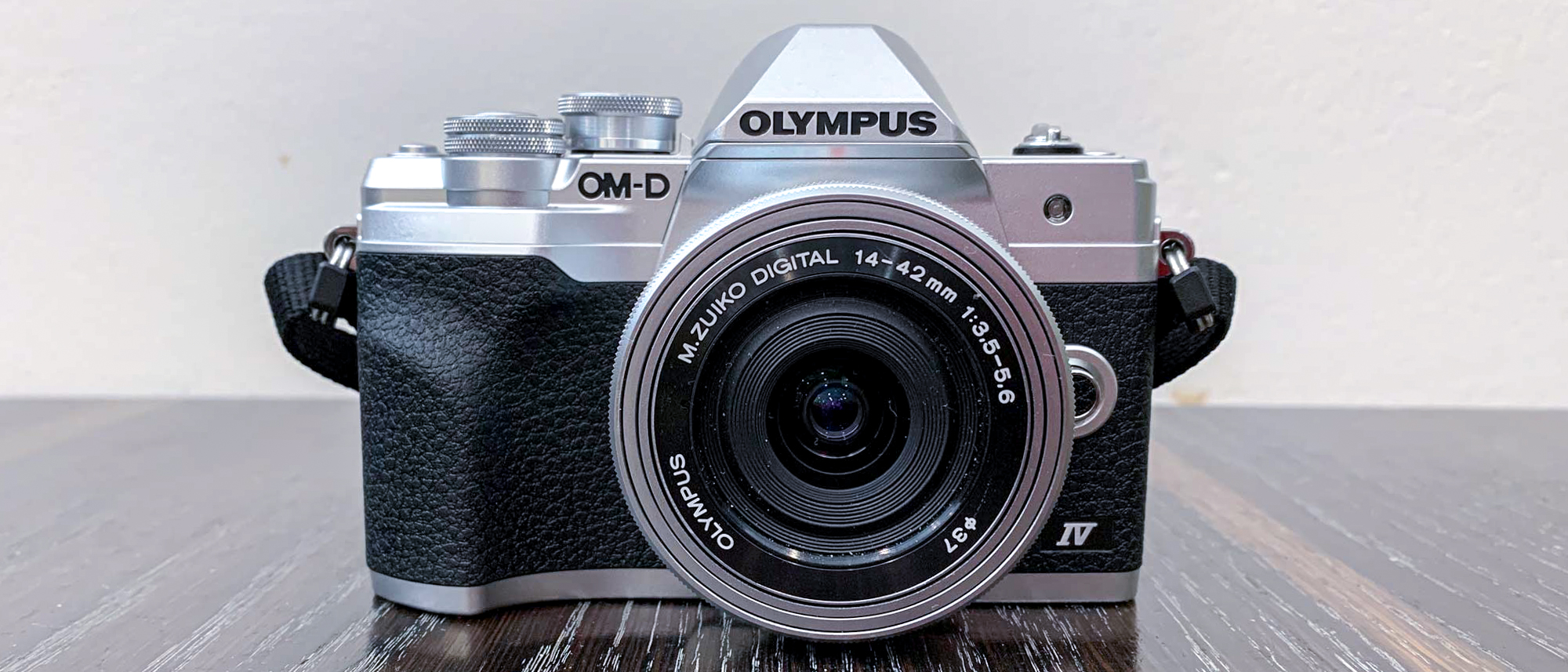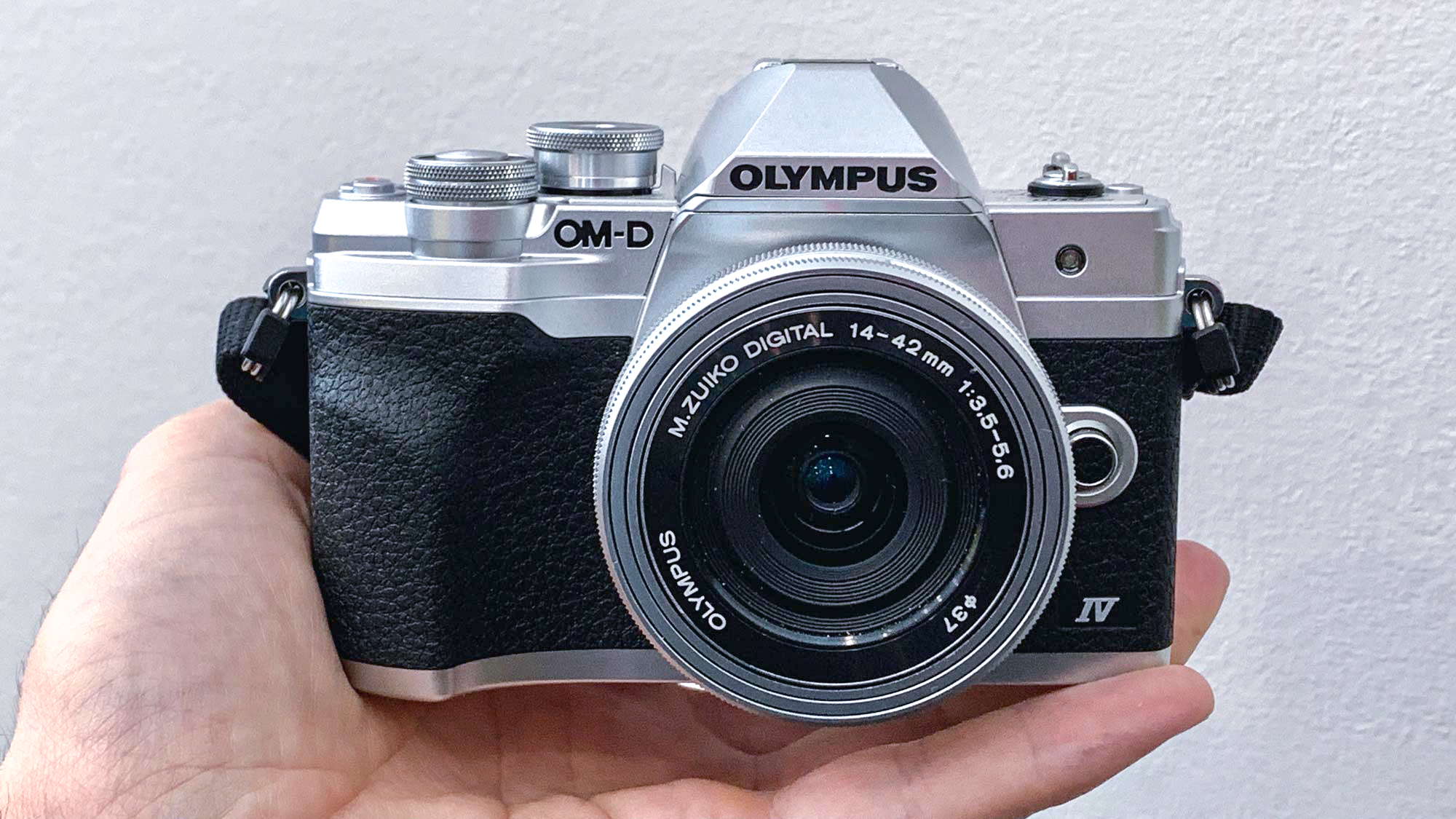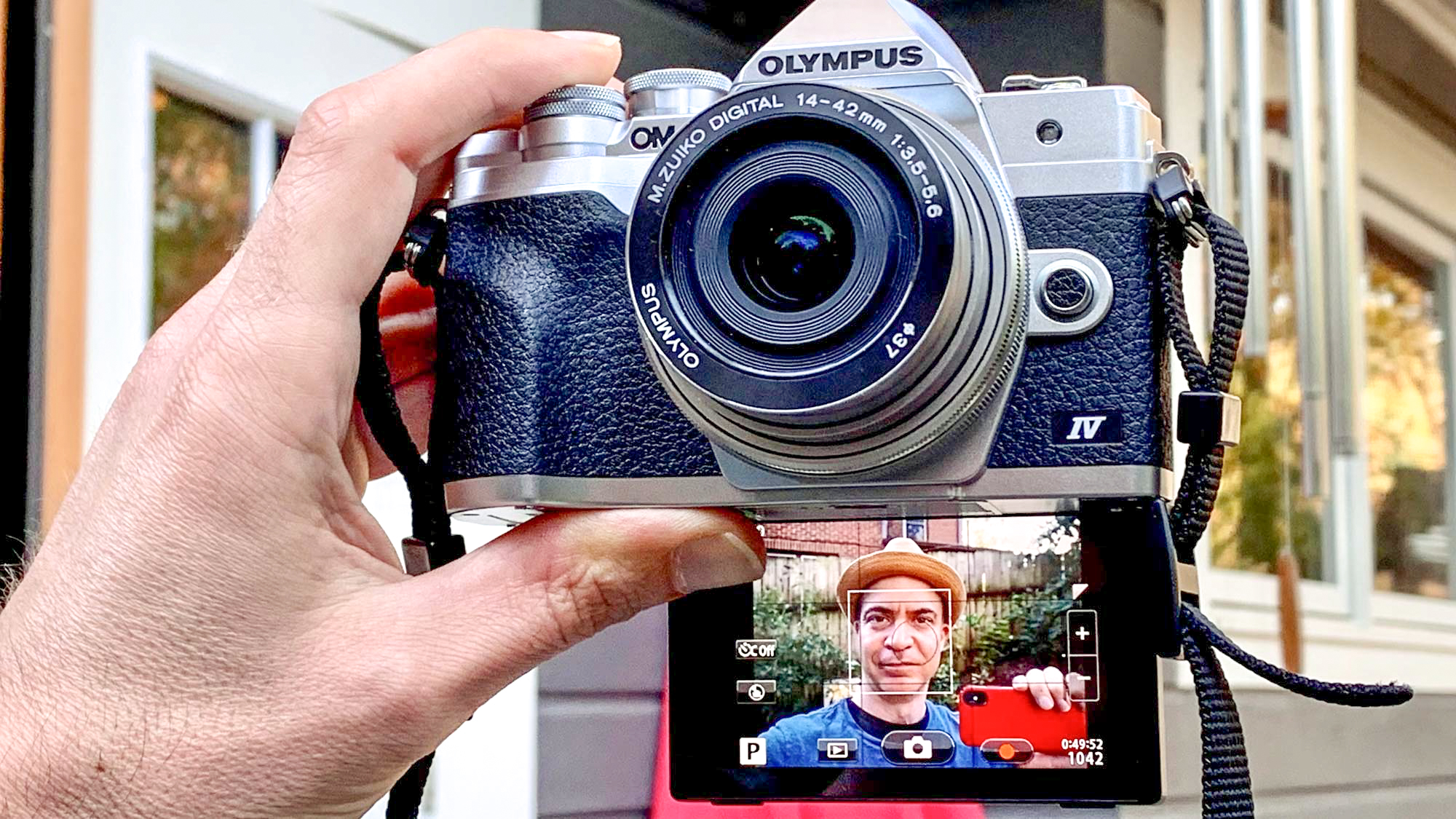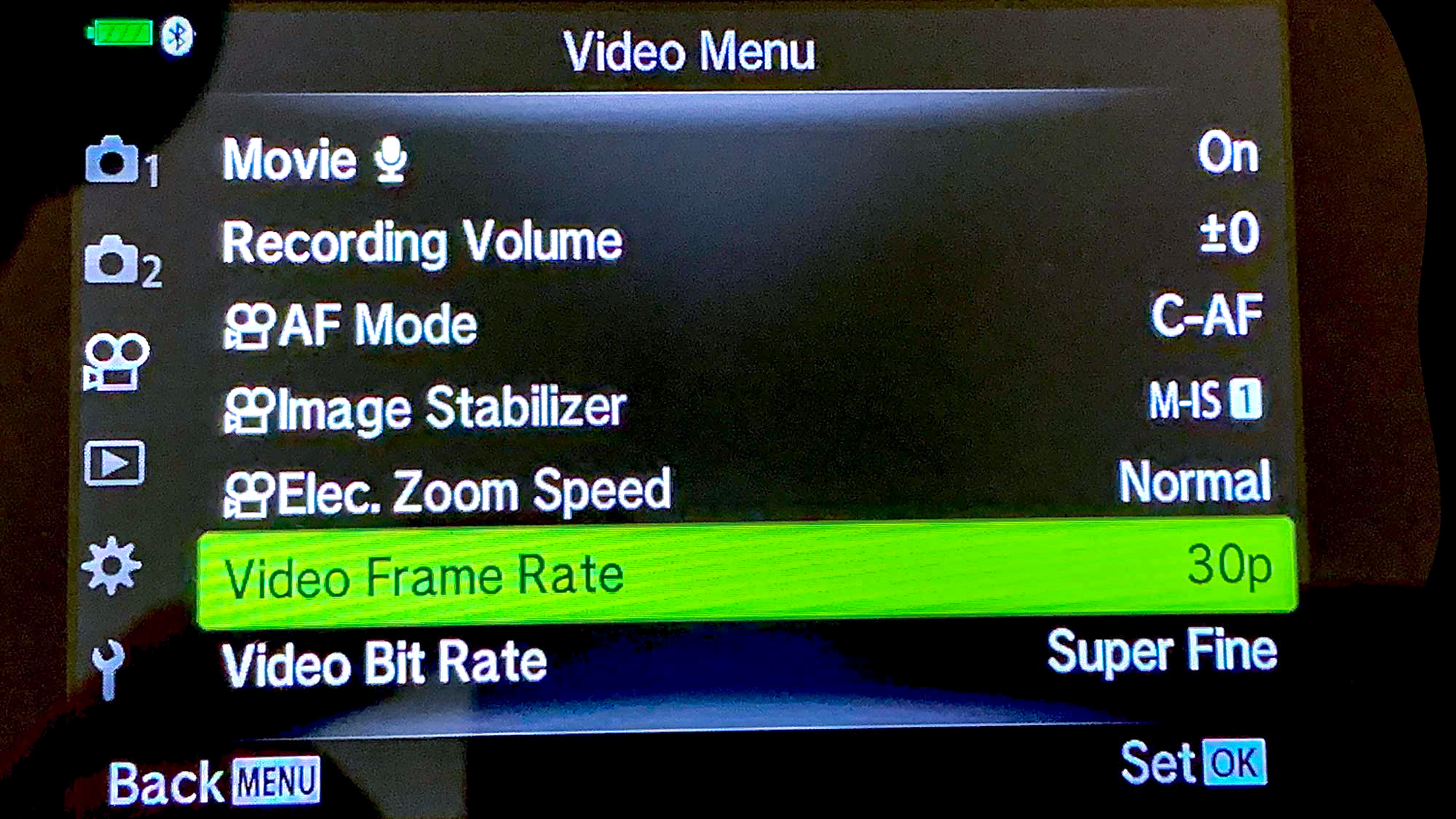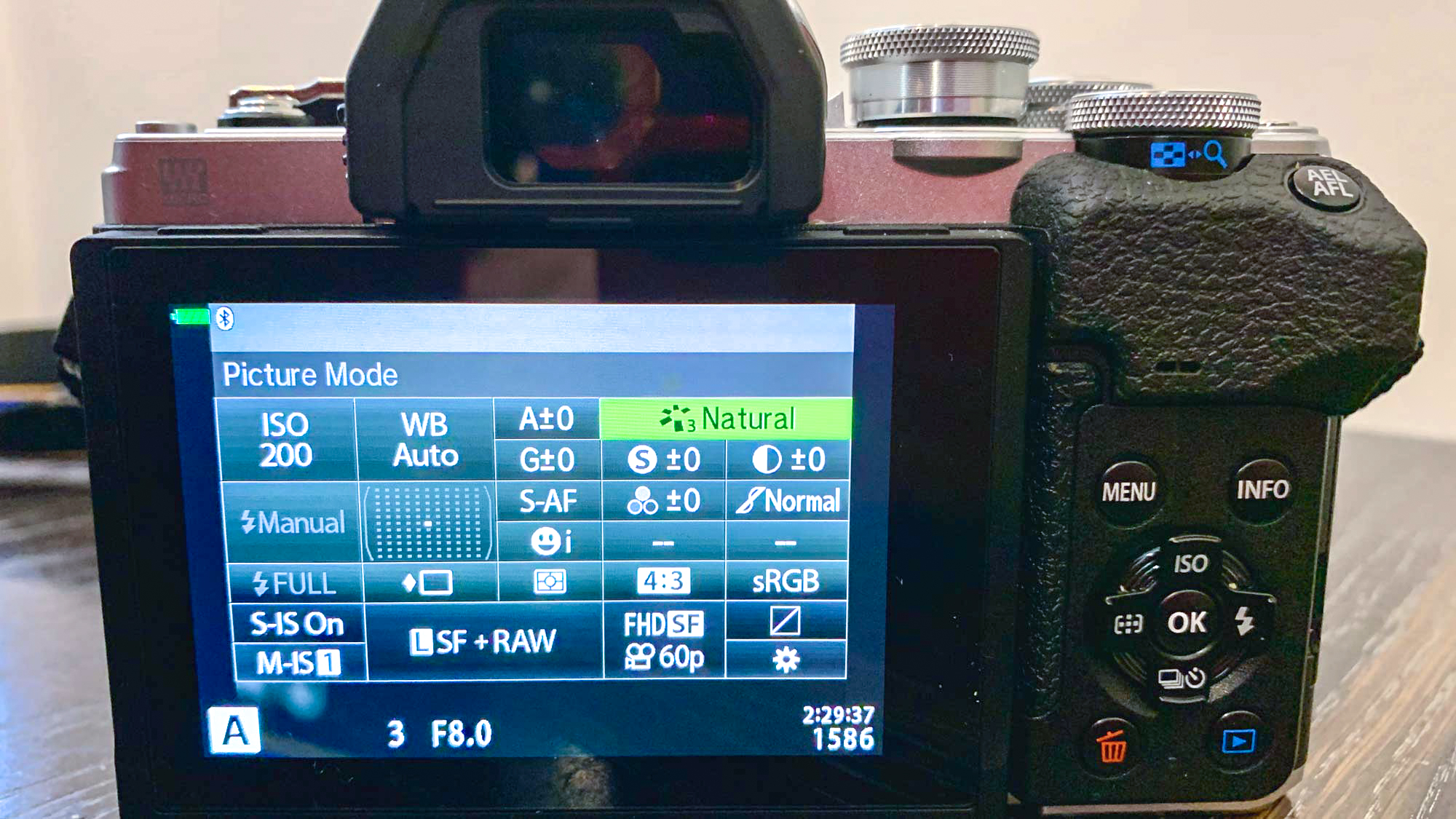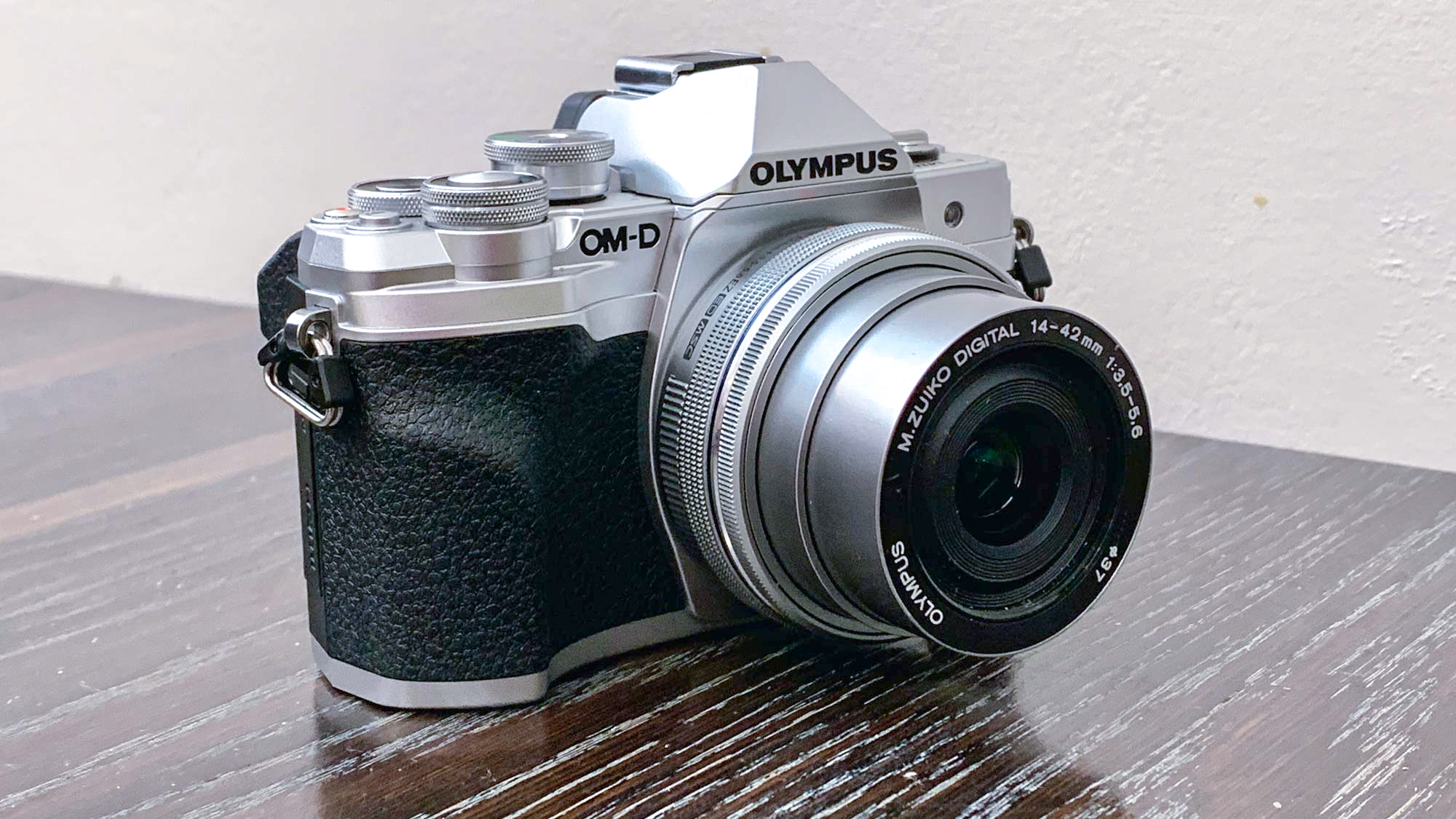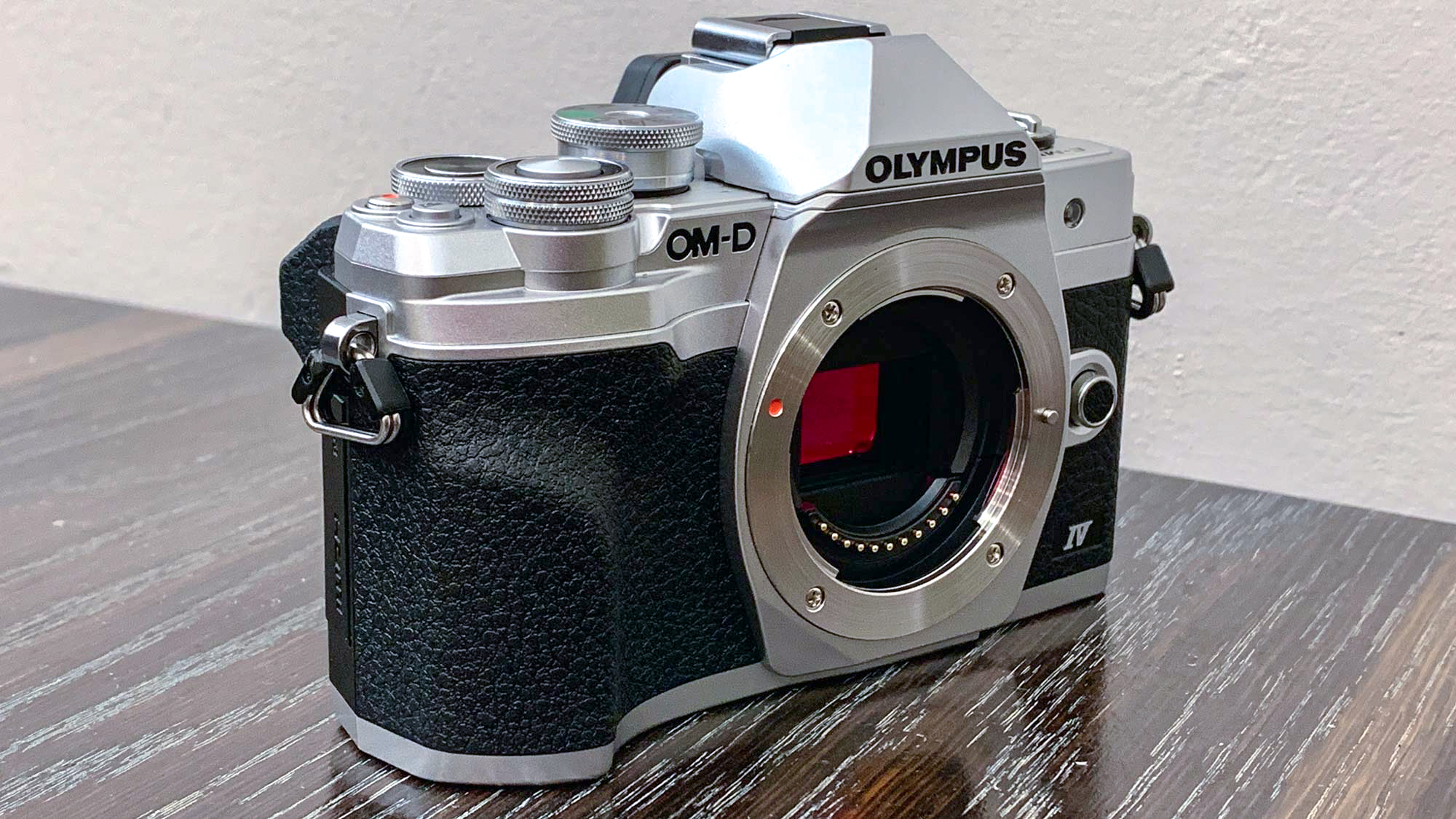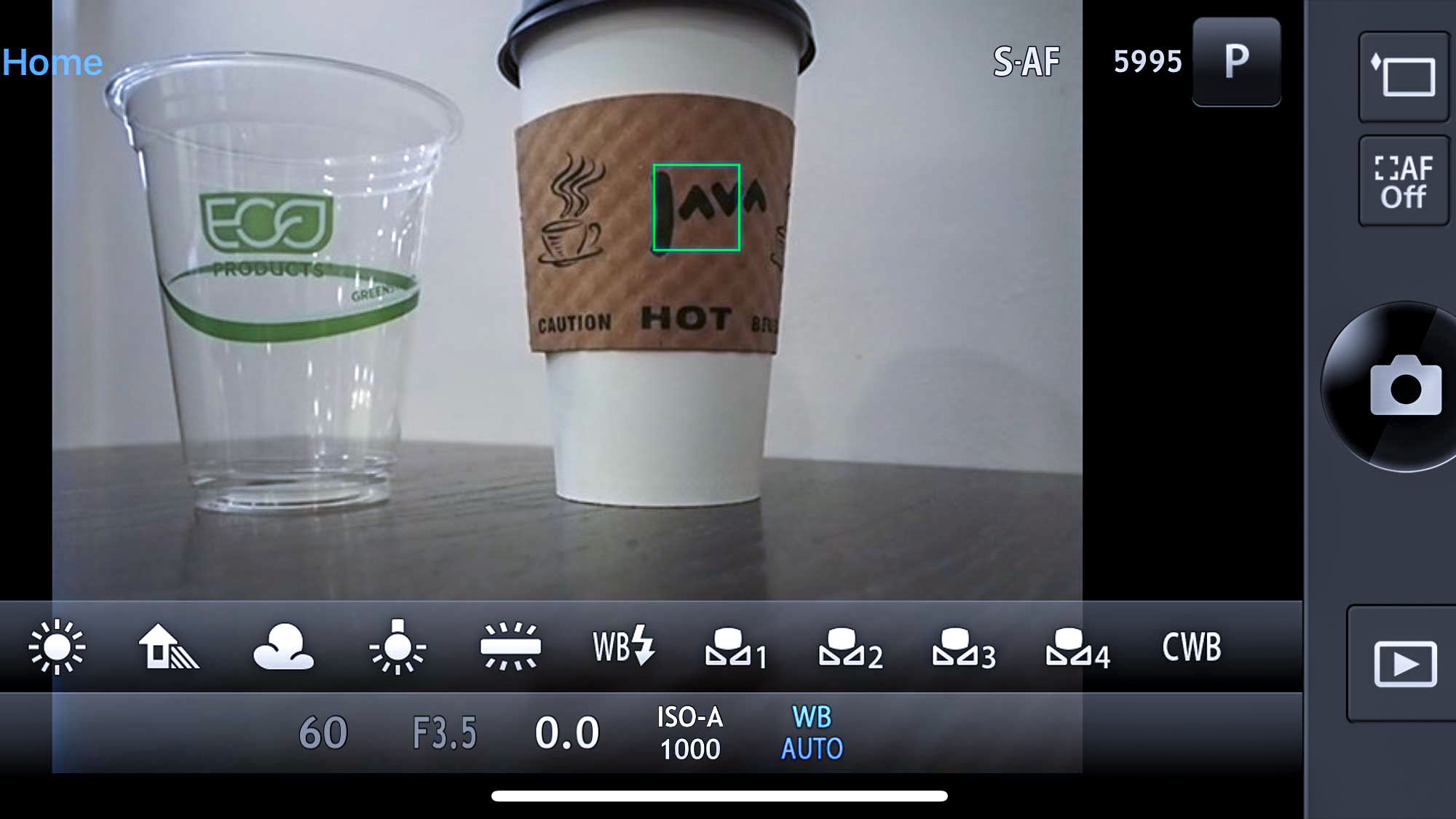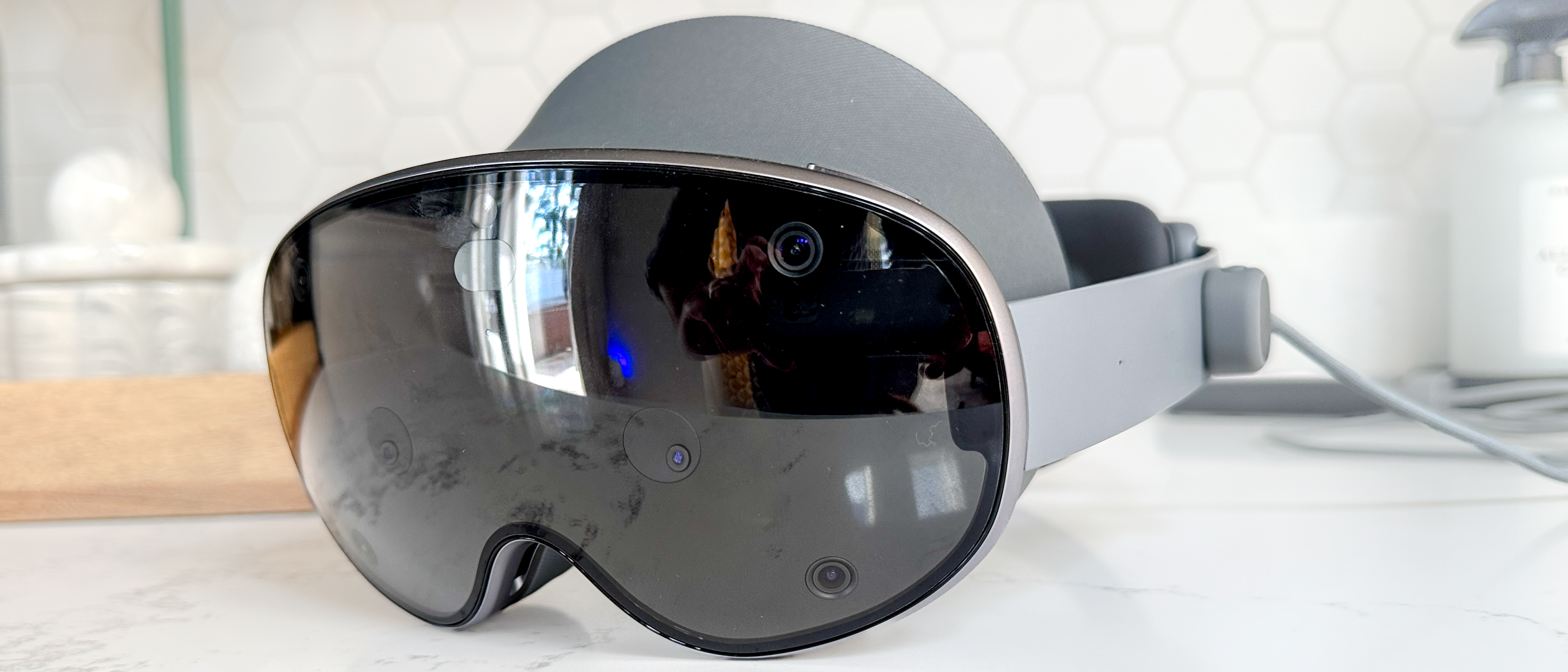Tom's Guide Verdict
Olympus's latest mirrorless camera delivers excellent image quality in a compact design that's a joy to use.
Pros
- +
Handsome retro design
- +
5-axis image stabilization
- +
Sharp detail and accurate color in images
- +
Great mobile app
Cons
- -
Cramped right-hand grip
- -
No microphone jack
Why you can trust Tom's Guide
The Olympus OM-D EM-10 Mark IV comes from a company that has stayed remarkably consistent across a broad range of products over the years. One of the pioneers of mirrorless camera technology, Olympus has always embraced its ability to produce slim, lightweight photographic devices. With excellent image quality, 5-axis in-body image stabilization, and a price well under $1,000, the Olympus OM-D EM-10 Mark IV provides a great entry point into the Olympus family. As I discovered during this Olympus OM-D EM-10 Mark IV review, it’s one of the best mirrorless cameras for the money.
Olympus OM-D EM-10 Mark IV: Price and availability
The Olympus OM-D EM-10 Mark IV debuted in the summer of 2020. It lists for $700, body only. Olympus also bundles the camera for $800 with an ultracompact 14-42mm (28-84mm full-frame equivalent) electronic zoom lens. With the arrival of the Mark IV, prices of its predecessor model, the OM-D EM-10 Mark III, have dropped to about $500, with lens. The previous model offers a very similar design and capabilities, using an older, lower-resolution images sensor (16.1 vs. 20.3 MP) but the same TruePic VIII image processor.
Olympus OM-D EM-10 Mark IV: Who is the camera for?
The OM-D EM-10 Mark IV is a fine camera for both beginner and intermediate photographers. With its touch screen that rotates forward for selfie mode and 31 built-in image filters, the camera offers an easy upgrade from cellphone photography. And its compact design makes the Mark IV pretty easy to carry around. The approximately 17-ounce package (with compact zoom lens) can slip into a small purse or large coat pocket. An excellent smartphone app lets you easily transfer pictures and videos from the camera for quick online posting.
But the Mark IV is not dumbed-down in any way. Switch out of intelligent auto mode, and you have a very capable camera--not only with full manual control but with extensive fine tuning of image quality parameters. 5-axis in-body image stabilization is game-changing for capturing steady, spontaneous handheld video. It also allows you to shoot in low light at slower shutter speeds.
Olympus OM-D EM-10 Mark IV: Design
If you've seen any Olympus camera in the past decade, the OM-D E-M10 IV will look familiar. Olympus long ago settled on a retro design aesthetic, recalling its film cameras of the 1970s. But it's more than a gimmick. Those designs were very handy for photographers. The faux leather wrap on the front of the camera, for instance, provides a comfortable, soft-but-solid grip. The big mode dial is easy to reach. And the pyramid over the lens makes room for a large comfortable eyepiece to the electronic viewfinder (as well as a potent popup flash).
The compact design does involve some compromises. When I held the camera at my side, the right-hand grip offered just enough to hang on to if I held tight, but it left my fingers feeling cramped after a while. (With their comparatively massive grip, the Sony Alpha a6600 and its kin are almost impossible to drop.) And it's hard to hold the zoom ring on the slim kit lens without also grabbing the adjacent manual focus ring. The shutter button sits inside the exposure compensation knob, which left my index finger perfectly positioned to accidentally click the knob and set the exposure off by one or two increments.
It's critical to get an accurate preview of your photos before you shoot, and Olympus provides two great screens for that. The bright OLED viewfinder offers a generous resolution of 2.36 million dots—over one and a half times that of the rival Sony Alpha a6100's eyepiece.
Get instant access to breaking news, the hottest reviews, great deals and helpful tips.
The camera also has a bright, colorful 3-inch LCD touchscreen with about a million dots of resolution. The screen tilts up about 90 degrees and down 180 degrees to face you when shooting selfies.
The camera makes fair use of the touchscreen. You can tap the screen to set a single focus point, choose a subject for focus tracking, or activate autofocus and shutter in one tap. When viewing photos, you can swipe left and right through the images but can't pinch to zoom. The touch screen only sometimes helps with camera settings. For instance, I could double-tap the popup menu to access ISO settings, but I couldn't tap on a specific value, like ISO 400. I had to use the physical buttons instead.
Olympus OM-D EM-10 Mark IV: Interface
Analog aesthetic aside, the OM-D E-M10 IV is a thoroughly digital device with access to extensive controls via its bright 3-inch LCD screen. For such a stylish-looking camera, its menus are shockingly dingy—mostly thin white text on black. And they go on and on. Pressing the Menu button brings up a screen with six subsections, and sometimes they have yet more subsections.
The order of elements doesn't seem very logical, either, For instance, the first subscreen shows items like Reset, Picture Mode, and Metering. But common settings like image size and aspect ratio are nowhere to be found. Setting video mode takes two steps on two different screens. Sony's cameras, notorious for their baffling menus, are models of efficiency by comparison.
Fortunately, the camera also provides two popup menu options that make it easy to quickly access key settings such as ISO, white balance and focus modes. Pressing the OK button on the back of the camera brings up a fairly simple menu that focuses on the key settings. A menu button on the top left of the camera brings up far more detailed controls, such as the ability to select autofocus points or adjust contrast or color temperatures of images you are shooting.
Olympus OM-D EM-10 Mark IV: Photo quality
Previous OM-D E-M10 models have shown excellent image quality, and the Mark IV lives up to its heritage. The camera captures sharp details from the center to the edge of the frame, even with the inexpensive kit lens.
I tested the camera with two lenses, primarily the M.Zuiko Digital ED 14-42mm F3.5-5.6 EZ kit lens but also the M.Zuiko Digital ED 14-150mm f/4-5.6 II ($499) for some long shots. For comparison photos, I used my Sony a6000 mirrorless camera, with similar lenses. I took photos primarily in program and aperture-priority modes, with ISO set as low as possible, typically the lowest native level of 200 (except when testing for image noise). I generally used defaults for all settings, such as the "Natural" picture mode for color rendering. Images were captured as JPEGs at the highest quality level (super fine).
Colors are spot-on in the camera's default "Natural" picture mode setting, both by sunlight (above) and under compact fluorescent lights (below).
Skin tones look natural in this photo of a drummer from a porch front concert. The photo also shows off the Mark IV's ability to handle lighting extremes. The drummer is sitting in the dark shade of the porch, but portions of his drum kit are exposed to the bright afternoon sun. The camera achieves an impressive balance of exposure across this broad range of lighting.
This being Olympus, the camera encourages you to explore tweaks. Picture mode is one of the first settings that appears on both of the on-screen popup menus. Clicking over one to the left engages vivid mode, which adds just a hint of extra saturation and warmth to images. It's the best setting to consistently produce punchy images right out of the camera, with no need for editing.


Digital zoom has come a long way since the days when it just meant a larger, pixelated image. The Mark IV has a handy button just to the right of the shutter that activates a very sharp 2x digital zoom effect for when the lens just isn't long enough to grab the image. I found it especially handy for video, which isn't as easy to crop into as a high-res photo.


Olympus OM-D EM-10 Mark IV: Low-light performance
Low light performance is a triumph. Olympus uses a substantially smaller sensor than most of its mirrorless camera rivals. (It's so-called "four-thirds" format chip is only about 60% the size of the APS-C chip used by companies such as Sony and Fujifilm.) Smaller chips long meant nosier photos at high ISO, but that correlation no longer holds up.
Low light performance is a triumph.
Despite the jump in resolution, the OM-D E-M10 IV suppresses pixel noise at least as well as its predecessors. Images didn't start showing much graininess until ISO 3200, and even then only at 100 percent size. At less than full size, you could easily shoot up to ISO 3200, and even ISO 6400 at social media-posting resolutions. Colors stayed consistent through ISO 6400—before shifting noticeably at ISO 12,800 and at the maximum of ISO 25,600—which are too grainy to use, anyway.
Olympus OM-D EM-10 Mark IV: Video quality
The same fine attributes of the camera's still photography carry over to video. This 4K 30fps clip was captured of the same band a bit later in the day when the harsh sun had gone down. It shows subtle, accurate color. Autofocus holds fairly well throughout the clip, with a few hiccups.
But video capabilities are ultimately held back by the built-in stereo microphones. The camera could capture better audio with an external microphone, but Olympus doesn't provide a mic jack, as Sony's a6100 does.
This also limits the camera as a vlogging device, as even cellphones allow you to plug in an external mic. The flip-down screen is also no good for vlogging, as it would be blocked by a tripod. Sony's a6100 gets around the problem with a screen that rises up above the camera. Another option would be a vari-angle screen that swings to the side and rotates forward.
Olympus OM-D EM-10 Mark IV: In-body image stabilization
In-body 5-axis image stabilization is the OM-D E-M10 IV's standout feature. It's not common in mirrorless cameras, and the capability is especially rare at this price. For instance, Sony's least expensive new camera with 5-axis image stabilization, the a6600, typically sells for $1,400 (body only).
If you aren't photographing action, you can shoot sharper pictures at lower ISOs and slower shutter speeds thanks to stabilization. At shutter speeds as low as 1/5 second, I captured handheld photos as crisp as if shooting at 1/60 second on a standard camera. That's right in line with the company's claim that the camera provides 4.5 stops of stabilization.
5-axis stabilization is a godsend for handheld video. To keep from frightening the rabbit in this 1080p clip, I shot from about 20 feet away using the Olympus M.Zuiko Digital ED 14-150mm f/4-5.6 II lens. At 150mm, even the slightest jitters are considerably magnified. Yet the video stays relatively steady throughout. It's not perfect, but it's watchable, which is impressive at this focal length.
Olympus OM-D EM-10 Mark IV: Autofocus
I had not expected autofocus to be in the positive column. The Mark IV uses the traditionally slower contrast-detection autofocus technology, in a world where even cellphones provide the faster phase-detection method. Olympus nevertheless rings impressive speed from the old technology, using 121 contrast-detection points on the sensor. In still photography, the camera quickly snapped to focus, even with moving subjects like this speckled Sussex chicken. (You can select which focus points to use in the popup settings menu, or just tap on the LCD touchscreen to set your point and activate the shutter.)
To push the technology, I shot video while following skittish chickens around the yard. I almost always captured crisp 1080p footage, even using the large 14-150mm zoom lens. The camera maintained focus relatively well as my subjects moved about, fading out only on occasion. The fairly steady video is also further testament to the camera's image stabilization tech.
The Mark IV is no class leader, though. The rival Sony a6100 is virtually psychic in its ability to recognize and lock on the subject of a photo or video. And it can capture 11 frames per second, setting focus for each one, whereas the Mark IV can capture just 5, with autofocus. The Mark IV can shoot up to 8.7 FPS with the mechanical shutter and 15 FPS using electronic shutter, if it doesn't adjust AF between shots; but that's of little value with moving subjects. If action photography is a big part of your craft, you'll do better with the Sony a6100; but for most subjects, the Mark IV autofocus is plenty fast enough.
Olympus OM-D EM-10 Mark IV: Mobile app
Mobile apps often feel like an afterthought with digital cameras. But the Olympus OI.Share app (for Android and iOS) is a joy to use. I just tapped the share button on the camera screen to initiate the pairing process and fired up OI.Share on my iPhone to complete it. Setup happened entirely within the app, without having to visit the phone's wireless settings. I simply scanned a QR code displayed on the camera's screen to establish a Bluetooth connection. That connection then made it quick and easy to establish (and reestablish) a faster Wi-Fi link. OI.Share quickly displays the photos on the camera, making it easy for me to select an image to transfer to my phone and share to Instagram.
The app also provides extensive remote control, allowing me to adjust every major setting, such as ISO, aperture, shutter, and white balance. I could also control the electronic zoom lens remotely. As with the camera's own LCD, tapping on the phone screen selects the autofocus point and snaps a photo. OI.Share also provides handy user support including 10 instructional videos.
For Olympus, filters aren't an afterthought. The company has provided filter effects in its cameras since before Instagram. The OM-D E-M10 IV boasts a whopping 31 filters, including the fun new Instant Film filter. Flip the Mode dial to Art, and you can tap through the filter options on the LCD screen to preview how they will look. I especially liked Vintage, Dramatic Tone, and Pale Light and Color when shooting flowers.
Olympus OM-D EM-10 Mark IV: Verdict
Certain products inspire a sense of affection, and the Olympus OM-D EM-10 Mark IV was one of those products for me. It's a good-looking device that you can feel proud to carry around, and it has a solid feel that inspires confidence in its capabilities. Photo quality is excellent, and in-body image stabilization only improves the chances of getting sharp photos and videos.
Certain products inspire a sense of affection, and the Olympus OM-D EM-10 Mark IV was one of those.
There are a few downsides that kept the camera from scoring even higher, such as its autofocus tech and speed vs competitors, especially the Sony a6100. And while the brand has gotten a new lease on life, investing in the Olympus system does entail more risk than it did a few years ago. None of these concerns are close to deal breakers, though. If you buy the Olympus OM-D EM-10 Mark IV, you're going to get a lot of beautiful photos and have a lot of fun taking them.
Sean Captain is a freelance technology and science writer, editor and photographer. At Tom's Guide, he has reviewed cameras, including most of Sony's Alpha A6000-series mirrorless cameras, as well as other photography-related content. He has also written for Fast Company, The New York Times, The Wall Street Journal, and Wired.
